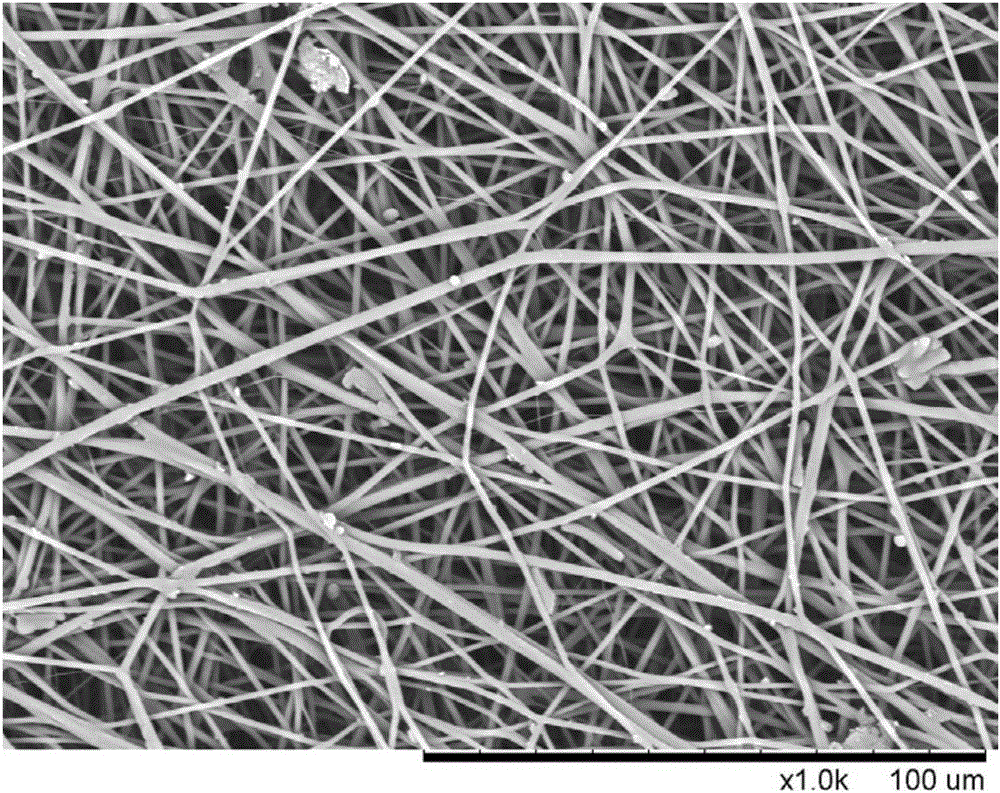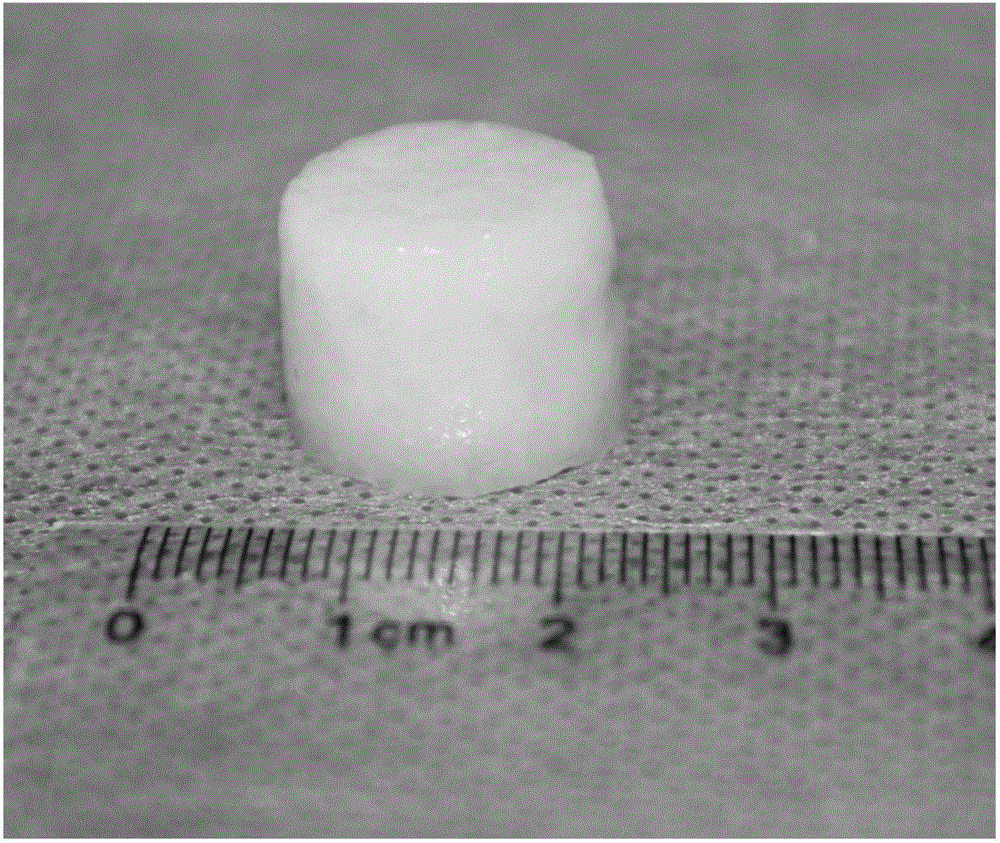Preparation method for nanofiber porous scaffold having compression elasticity in wet state
A nanofiber and compressive elasticity technology is applied in the field of preparation of three-dimensional porous scaffolds, which can solve the problems of poor mechanical properties of scaffolds, poor mechanical properties of three-dimensional scaffolds, and difficulty in application, and achieve the effects of high compressive elasticity and excellent water absorption performance.
- Summary
- Abstract
- Description
- Claims
- Application Information
AI Technical Summary
Problems solved by technology
Method used
Image
Examples
Embodiment 1
[0027] Gelatin and polylactic acid (mass ratio 1:5) were dissolved in hexafluoroisopropanol, with a total mass fraction of 11%. Inhale the solution into the syringe, control the advance rate of the micro-injection pump to 5mL / h, connect a 15KV high-voltage power supply to the syringe needle, and receive it with aluminum foil at a receiving distance of 15cm. Gelatin / PLA nanofiber membranes were obtained by electrospinning.
Embodiment 2
[0029] Gelatin and polylactic acid (mass ratio 1:5) were dissolved in hexafluoroisopropanol, with a total mass fraction of 11%. Inhale the solution into the syringe, control the advance rate of the micro-injection pump to 5mL / h, connect a 15KV high-voltage power supply to the syringe needle, and receive it with aluminum foil at a receiving distance of 15cm. Gelatin / PLA nanofiber membranes were obtained by electrospinning. Cut the nanofibrous membrane into a sheet with a size of about 0.5×0.5 cm with scissors. Then weigh 1 g of the nanofiber membrane and add it to a beaker containing 100 mL of tert-butanol, and use a high-speed pulverizer to pulverize the nanofiber membrane into a uniform short fiber solution.
Embodiment 3
[0031] Gelatin and polylactic acid (mass ratio 1:5) were dissolved in hexafluoroisopropanol, with a total mass fraction of 11%. Inhale the solution into the syringe, control the advance rate of the micro-injection pump to 5mL / h, connect a 15KV high-voltage power supply to the syringe needle, and receive it with aluminum foil at a receiving distance of 15cm. Gelatin / PLA nanofiber membranes were obtained by electrospinning. Cut the nanofibrous membrane into a sheet with a size of about 0.5×0.5 cm with scissors. Then weigh 1 g of the nanofiber membrane and add it to a beaker containing 100 mL of tert-butanol, and use a high-speed pulverizer to pulverize the nanofiber membrane into a uniform short fiber solution. Then, add the short fiber solution into the mold, put it in a refrigerator at -80° C., and freeze it for 1 hour. Finally, put it into a vacuum freeze dryer and dry it for 24 hours to obtain a three-dimensional scaffold. Put the scaffold into a mixed solution of glutaral...
PUM
 Login to View More
Login to View More Abstract
Description
Claims
Application Information
 Login to View More
Login to View More - R&D
- Intellectual Property
- Life Sciences
- Materials
- Tech Scout
- Unparalleled Data Quality
- Higher Quality Content
- 60% Fewer Hallucinations
Browse by: Latest US Patents, China's latest patents, Technical Efficacy Thesaurus, Application Domain, Technology Topic, Popular Technical Reports.
© 2025 PatSnap. All rights reserved.Legal|Privacy policy|Modern Slavery Act Transparency Statement|Sitemap|About US| Contact US: help@patsnap.com



